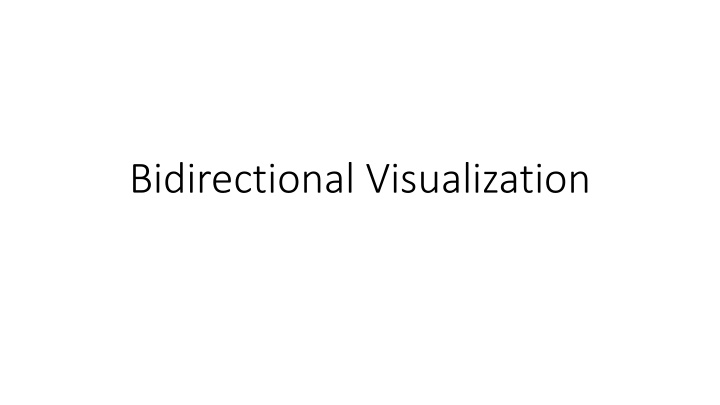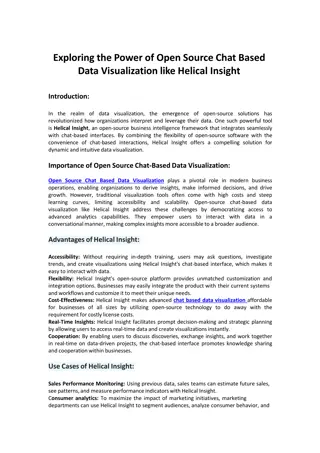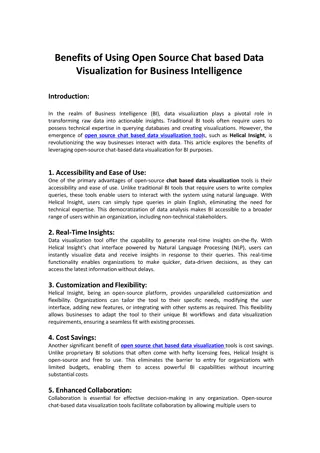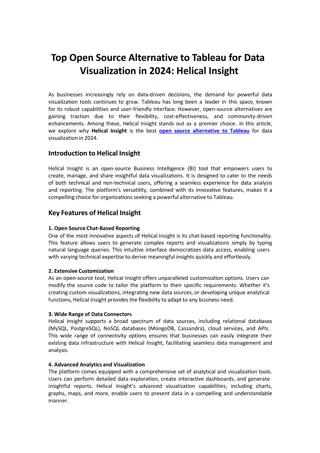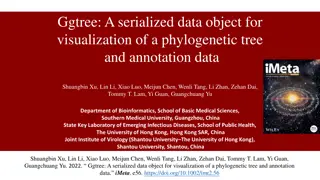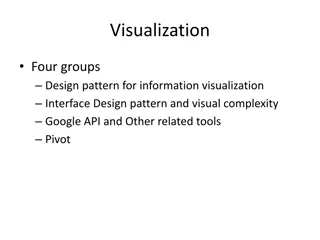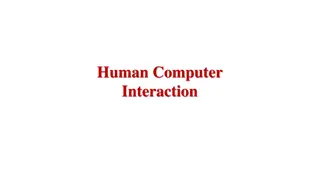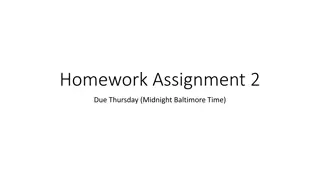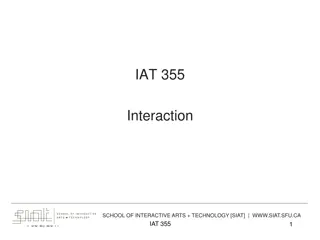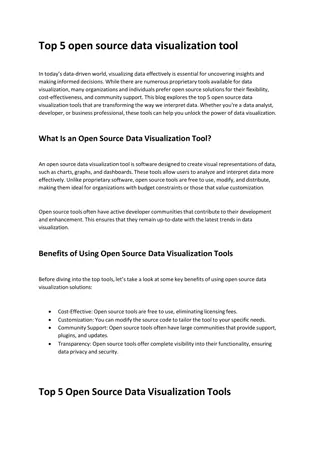Bidirectional Visualization: Enhancing Data Interaction
Bidirectional visualization allows users to make changes to the visualization that directly impact the data being presented. This innovative approach transforms visualization software into a dynamic data editor, enabling seamless interaction between users and structured information. Explore the challenges, approach, and tools in bidirectional visualization to optimize data manipulation and understanding.
Download Presentation

Please find below an Image/Link to download the presentation.
The content on the website is provided AS IS for your information and personal use only. It may not be sold, licensed, or shared on other websites without obtaining consent from the author.If you encounter any issues during the download, it is possible that the publisher has removed the file from their server.
You are allowed to download the files provided on this website for personal or commercial use, subject to the condition that they are used lawfully. All files are the property of their respective owners.
The content on the website is provided AS IS for your information and personal use only. It may not be sold, licensed, or shared on other websites without obtaining consent from the author.
E N D
Presentation Transcript
What is Bidirectional Visualization? A form of visualization interaction where some changes the user makes to the visualization cause changes to the data being visualized Consider Card s visualization pipeline Visualization software becomes a data editor
Introduction Information overload leads to the need for more automatic processing This results in more structured and formalized information But people still need to interact with this structured information Visualizations may allow people to more effectively work with this information
Problems Difficulties working with structured information Incomplete representation: formalization decomposes knowledge Intermediate representation: loses transient information generated during problem solving
Approach Editable visualizations Combine visualization techniques and a direct manipulation workspace Made possible by two-way mappings Two-way mapping Data table visual display Visualization maps data to display Parsing maps edited display to data schema Mapping styles Discrete vs. continuous
VITE Visual workspace for manipulating structured information Builds on spatial hypertext VIKI & VKB for working with less structured information where visualization may emerge over time
Mapping Engine Data attributes mapped to visual properties Extent (position and size in two dimensions) Color (symbol and symbol border) Border width Labels Discrete and continuous mappings
VITE Workspace
Mapping Designer Interface for creating a two-way mapping Specify attributes mapped to visual features
Evaluation Goal is to investigate the use of VITE for making decisions How do 2-way mappings impact solution strategies? How are visual properties selected during mapping design? Participants 11 graduate students, most with some interface design experience Procedure Tutorial, Two tasks and task questionnaires, General questionnaire Data collected Intermediate and final workspaces and mapping profiles
Task 1: Assigning Aircraft to Runways: Task 1: Assigning Aircraft to Runways: Visualization and Simple Scheduling Visualization and Simple Scheduling 15 attributes for each flight Results: Position used for attributes most important to decision making and to perceive distribution Text labels used for showing accurate values Size and color used for perceiving value and distribution
Task 2: Selecting Players for Fantasy Task 2: Selecting Players for Fantasy Basketball Team Basketball Team Athlete : The name of the player Team : Where the team comes from POS : Position the player plays Decision : Decision to choose, reject, or still consider the player. 3PT : 3 point shots made AST : Assists REB : Rebounds BLK : Blocked Shots STL : Steals TO : Turnovers FTM-A : Free Throws Made-Attempted FT% : Free Throw Percentage FGM-A : Field Goals Made-Attempted FG% : Field Goal Percentage Min : Minimum field goal Market Value : Current salary to recruit the player Prev : Salary of the player's previous contract Change : Change of the player's salary between current market value and previous salary. Numeric constraints with different attributes important for different subdecisions Different positions tend to get points for different aspects of athlete performance 18 attributes for each player Results: Position, size, and color used to view values Position used to categorize elements while size and color used to order elements Two participants created two mappings Users performed visualization then removed mapping for freeform manipulation of content
Observations Users preference of visual properties Position > (Color, Size) Attributes mapped to multiple visual properties Use of visual properties: Text Label: for nominal values & precise feedback Position: status, sort, distribute, or categorize Color: status, categorization, or value distribution Size: compare value (numeric) or show categorization (discrete) Border Width: rarely used, too few values, and it effects the usefulness of border color Unmapped visual properties: temporary memory/categorizations
Conclusions Two-way mappings enable the combination of visualization and direct manipulation workspaces VITE supports the design of two-way mappings for a variety of data attribute and visual properties Complex tasks may benefit from multiple mappings/visualizations turning mappings on and off Participants reserved visual properties for interpretive expression recording information not part of original data schema
What is Bidirectional Visualization? A form of visualization interaction where some changes the user makes to the visualization cause changes to the data being visualized Consider Card s visualization pipeline Visualization software becomes a data editor
Assignments Sept. 26: Bidirectional Visualization readings write-up and Phase 2 Project Presentation due Sept. 28: Phase 2 Project Report due Oct. 3: Visualizing Textual Content and Visualizing Software readings write-up Questions?
